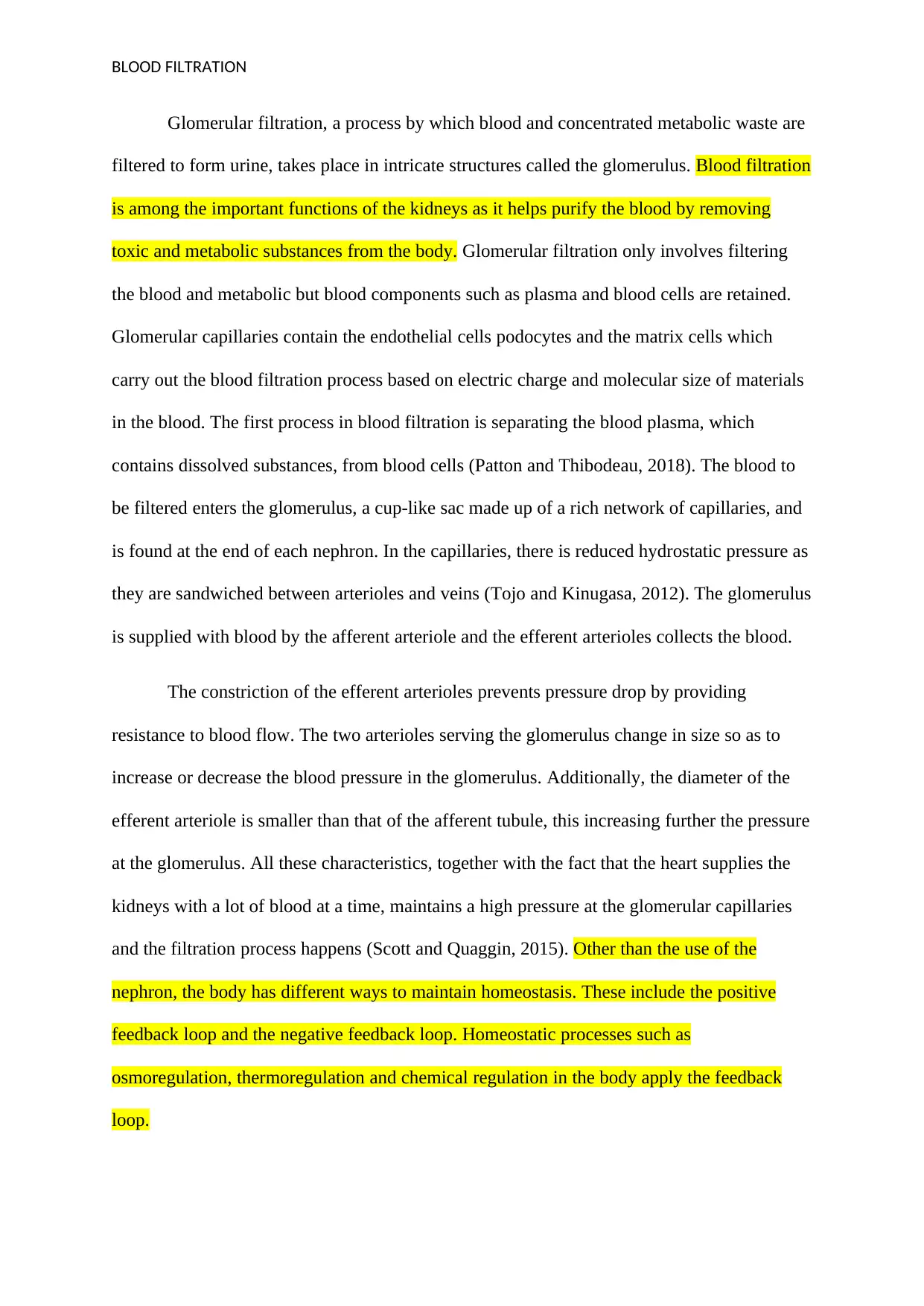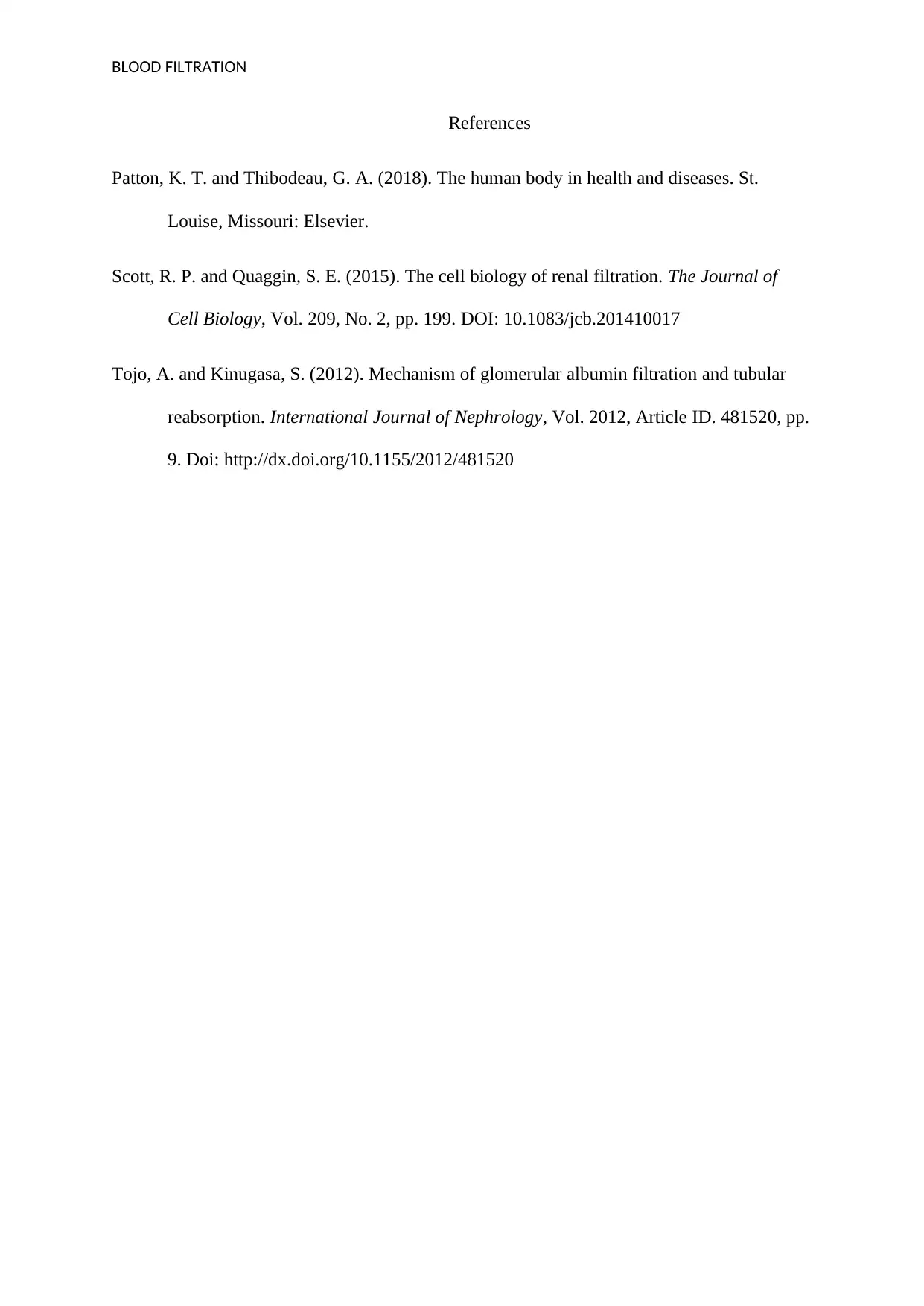Analysis of Blood Filtration and the Role of the Glomerulus
VerifiedAdded on 2023/01/23
|3
|495
|98
Report
AI Summary
This report provides an overview of blood filtration, with a specific focus on the glomerular filtration process. It details how the glomerulus, a network of capillaries within the nephron, filters blood to remove metabolic waste. The report explains the roles of the afferent and efferent arterioles, the impact of hydrostatic pressure, and the filtration of blood components. Additionally, it highlights the significance of the nephron in maintaining homeostasis through processes such as osmoregulation and thermoregulation. The report references relevant literature, including works by Patton and Thibodeau, and Scott and Quaggin, to support its claims. The report explains the importance of blood filtration in maintaining a healthy body.
1 out of 3










![[object Object]](/_next/static/media/star-bottom.7253800d.svg)